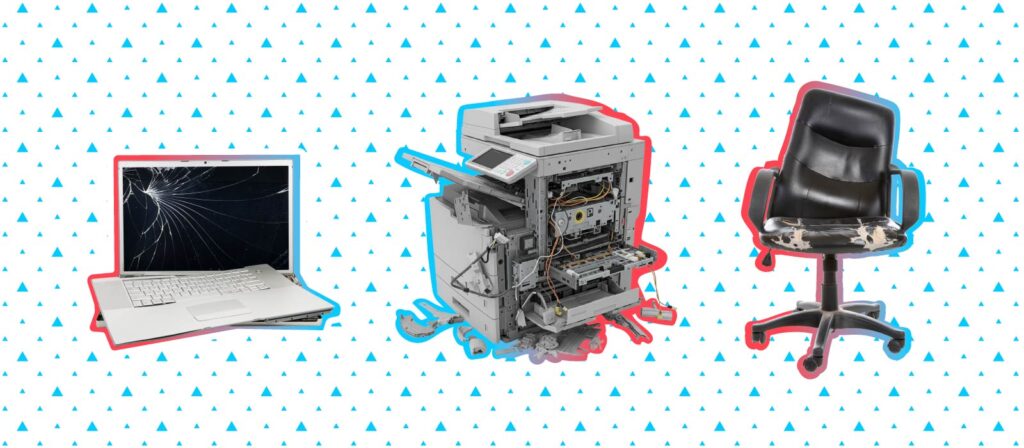Key takeaways
- A Life Cycle Cost Analysis (LCCA) is a comprehensive estimate of an asset’s total expenses, including initial purchase, future maintenance, energy, and disposal costs.
- LCCAs empower facility managers to make informed purchasing decisions by comparing options and understanding an asset’s true cost beyond its upfront price.
- While seemingly complex, LCCAs help save company money by revealing long-term financial implications and optimizing asset selection.
- Utilizing an LCCA is a vital tool for effectively managing the asset lifecycle, ensuring prudent spending and efficient company fund management.
A Brief Guide to Mapping Asset Costs Over Time
 These days, instant gratification has become a commonplace luxury (Have a question? Here—have a smartphone). However, while a right-now culture can be convenient, there’s also something to be said for a careful, drawn-out approach to finding information. For example, facilities managers can help save their company money by taking the time to draw up a life cycle cost analysis when they’re purchasing new assets. These cost estimates, while cumbersome to create, can be a great help in tracking the asset lifecycle and its cost over time.
These days, instant gratification has become a commonplace luxury (Have a question? Here—have a smartphone). However, while a right-now culture can be convenient, there’s also something to be said for a careful, drawn-out approach to finding information. For example, facilities managers can help save their company money by taking the time to draw up a life cycle cost analysis when they’re purchasing new assets. These cost estimates, while cumbersome to create, can be a great help in tracking the asset lifecycle and its cost over time.
Learn how OfficeSpace’s new asset management software can transform how you track and manage key assets.
Life Cycle Cost Analysis (LCCA)
The life cycle cost analysis is defined as the total sum of expenses estimated for an asset. According to Facilities Net’s Andrew Gager, this includes initial costs, future costs, and “resale, salvage, or disposal costs.” Ideally, a LCCA will assure the FM of one of the several outcomes. If they’re considering an expensive asset, the report can show them that their purchase, though costly, will be worth it for the lower maintenance fees. Or, it can show them that the improvement to the facilities will justify the higher expense. On the other hand, it may show them that the price is reasonable and a good fit for the budget, although the asset may require more work than a pricier model. In other words, LCCAs are price comparison tools that help FMs decide between different options.
Unfortunately, choosing the best equipment for your company isn’t as simple as picking the machine with the lowest purchasing price. Gager points out that acquisition only accounts for 15 percent of an asset’s total costs. Funds spent on energy costs take up 45 percent, maintenance 35 percent, and other expenses 5 percent.
Many Costs Adding Up
LCCAs involve a variety of different costs. In the initial cost category, of course there’s the price of the asset itself. There’s also the cost of labor, asset transportation, and travel coverage for the installation workers to consider. To get a handle on this, Jeff Cryder suggests in Today’s Facility Manager that if you’re shopping around for a new asset, like an HVAC system, have your vendors include an LCCA in their RFPs, instead of just the upfront cost.
S.O.S.
But once you’ve done that, there are the future costs to take into consideration—repair work, energy usage, and so on. How do you account for all these expenses, when energy use changes so much? How can you evaluate the asset, given your limited time and ability to research its capabilities? These questions often makes FMs shy away from LCCAs in the first place. However, Gager explains that “the organization’s procurement and finance departments, original equipment manufacturers, and contractors all can assist in determining estimates expenses and costs.”
Cryder agrees: “The FM and a building consultant can decide which costs are applicable to the project and produce a realistic LCC comparison of alternatives. For example, will there be renovation costs associated with a system [HVAC] upgrade? Or will the new system simply reside where there is an existing unit?” Technological solutions, like energy analysis software, can also help you project total energy costs.
In the end, while drawing up an LCCA may seem daunting, it can be a great tool for managing assets, and therefore company funds, much more effectively. As a bonus, you may even gain technical knowledge that you didn’t have before, placing you in a much better position to tackle another LCCA in the future.
image credit: pixtawan/freedigitalphotos.net



